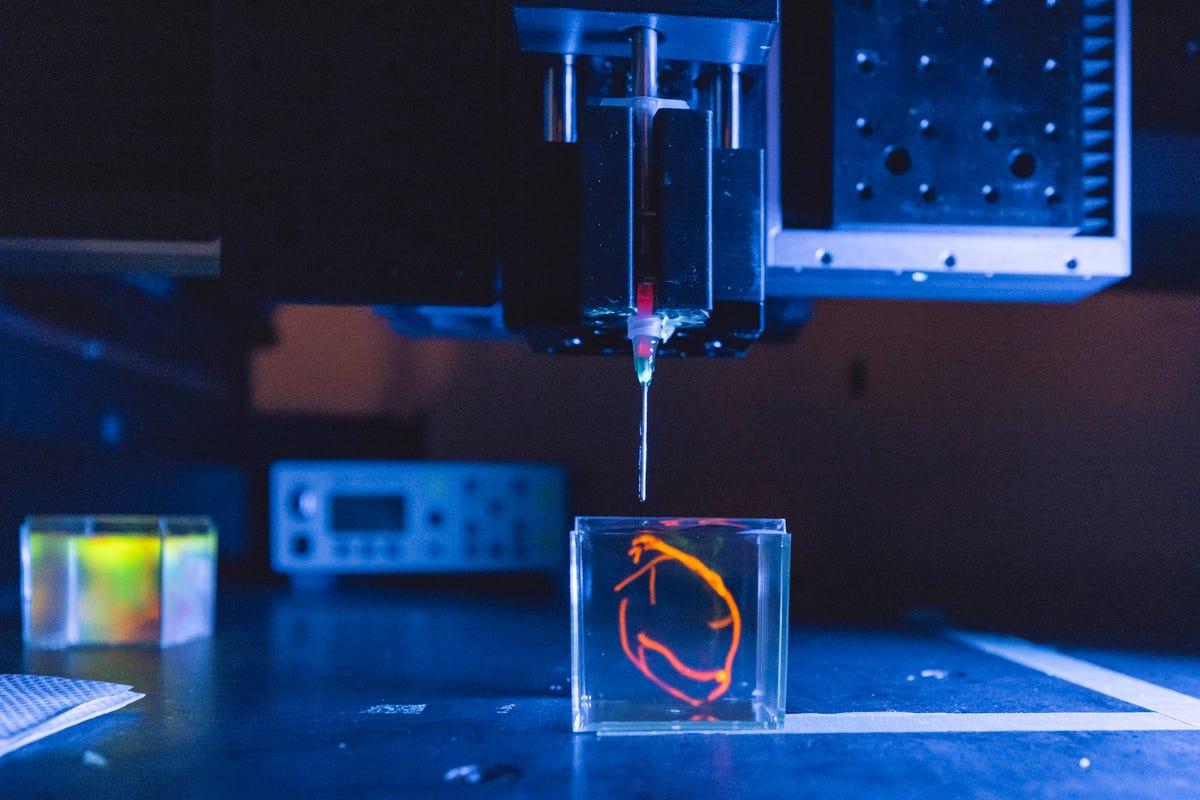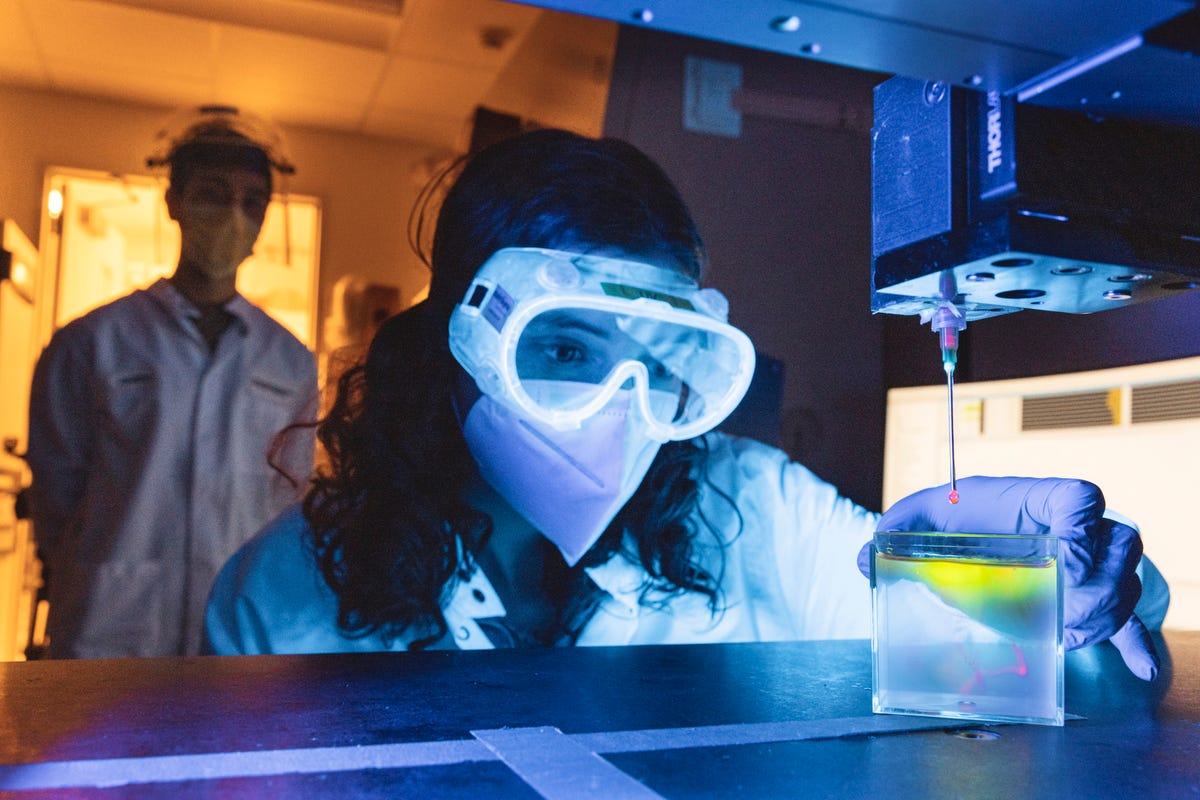Stanford Scientists Use Stem Cells to 3D-Print Heart Tissue
The technique could one day lead to organs printed on demand from a patient's own cells.
3D printers are changing the way we build our cars, our homes and even our food. And thanks in part to scientists at Stanford University, they could change the way transplant patients get new organs.
Mark Skylar-Scott and his team of bioengineers have developed a technique that allows them to 3D-print living heart tissue. The goal is to one day have the ability to print crucial pieces of the heart, like valves and ventricles, that can actually grow with a patient.
Nearly one in 100 children in the US are born with a heart defect. Although they can receive transplants, those transplants can be rejected by the body as long as 20 or 30 years later. Bioprinting a new organ using a patient's own cells could reduce those cases.

Stanford scientists can write vascular networks directly into the 3D-printed tissue.
"It is ambitious, but we believe that a lot of the basic building blocks to start a project like this are in place," Skylar-Scott told CNET. Watch the video above to see how the printing works.
The technique is an example of bioprinting, a process that uses living cells to create organ-like structures. Modern bioprinting isn't a new concept, but it's generally a slow process. It usually requires printing one cell at a time. Even printing 1,000 cells per second, it would take over a thousand years to make a single human heart.
Skylar-Scott and his team developed a method of speeding up the process, by printing with clusters of thousands of cells called organoids. "We take millions of those and condense them into what is essentially a human stem cell mayonnaise, that we can then print through the printer."

The technique is an example of bioprinting, a process that uses living cells to create organ-like structures
Once the cells are printed, they take on the general shape of tissue that can then have blood vessel networks printed within them.
The team has already printed a tube-like structure similar to a human vein, that could actually pump fluid on its own. The next step would be printing a larger structure, like a functional chamber that could be grafted onto an existing heart.
Skylar-Scott said he thinks a heart valve printed using this technique could be implanted in a human patient in as little as five years, though we're likely at least two decades away from a fully printed heart.
